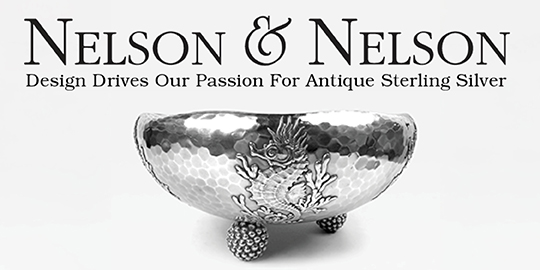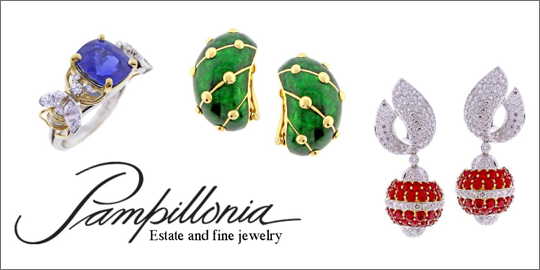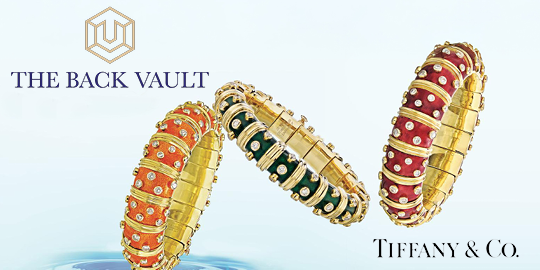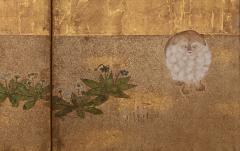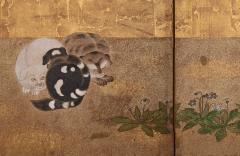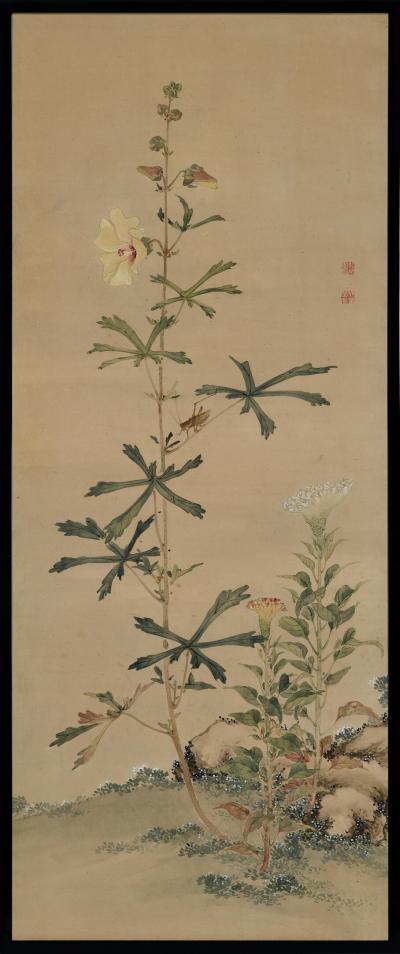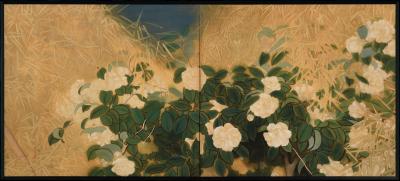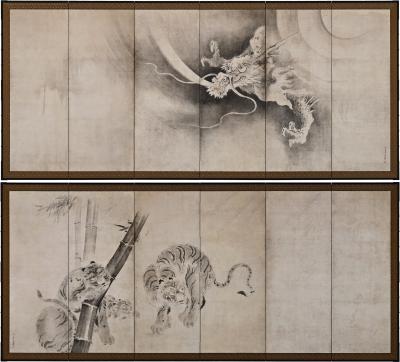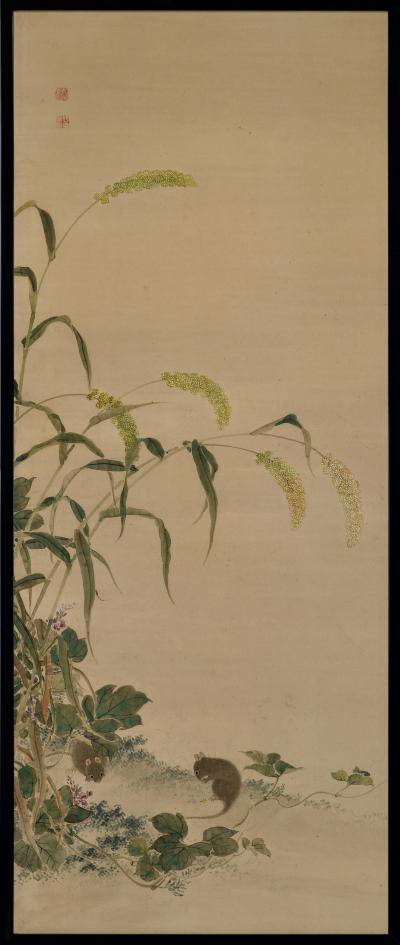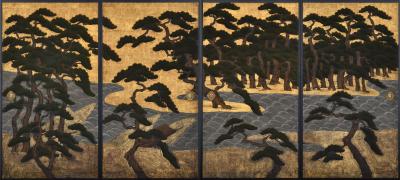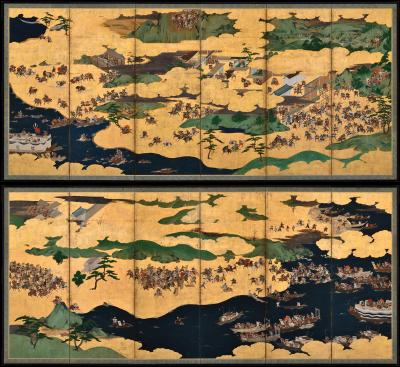Late 17th Century Japanese Screen. Puppy and Kittens on Gold Leaf.
-
Description
Anonymous
Late 17th century
Puppy & Kittens
A six-panel Japanese screen. Ink, color, gofun, gold-leaf and gold-fleck on paper.
Dimensions: H. 111 cm x W. 302 cm (44’’ x 119’’)
Price: USD 32,500
A medium sized late 17th century Japanese screen featuring a playful narrative scene with a puppy and four kittens. The puppy, adorned with a red ribbon and medallion, is pictured prancing toward the nonchalant group of kittens. The exuberance and movement of the puppy is contrasted against the stillness and nonchalance of the kittens. The distortion and exaggeration of the spotted and speckled kittens resembles the art of caricature; producing animated characters with a comical effect. Blooming in the field are Japanese violets (sumire), Dandelions (Tanpopo) and Japanese field horsertail (Tsukushi). These small flowers denote the season of spring, allowing us further insight into the mood of the scene. The strong and simplified geometric plain is delineated with gold leaf in the upper field and tsunago or gold flecks in the lower field.
Far from the modern age with its more precise awareness of realistic sketching, these cats and dogs were inspired by Chinese paintings from the 12th century Song dynasty. These were kept in Japan with the Shogunate and in temples and circulated amongst the heads of the Kano schools of painting. Given the age of the screen and its likely Kano school origins the imagery would have held strong auspicious meaning. As a painting subject, although not as common as other auspicious animal imagery, dogs generally conveyed ideas of prosperity, family harmony, and fertility; thus they were often portrayed in familial groups or as puppies playing. Dogs were also featured as the animals with the closest relationship to humans, hence the ribbon on the puppy. Cats, as well as being depicted as charming and cute creatures, have also been associated with fertility and family well-being.
The screen bears a signature which reads Douo hitsu, which simply means painted by Douo. It is quite unusual that it is without any seals of the artist and may well be a later, spurious addition to the screen. - More Information
-
Dimensions
W. 302 in; H. 111 in; W. 767.08 cm; H. 281.94 cm;
Message from Seller:
Kristan Hauge Japanese Art, based in Kyoto's museum district since 1999, specializes in important Japanese screens and paintings for collectors, decorators, and museums worldwide. Contact us at khauge@mx.bw.dream.jp or +81 75-751-5070 for exceptional access to Japanese art and history.







